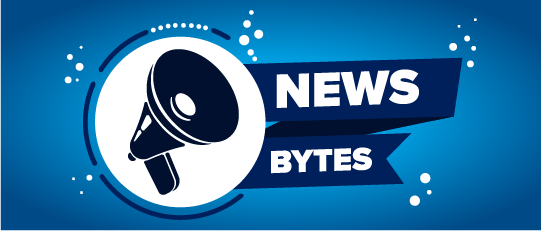For WorldatWork Members
- Easy AI Tips to Improve Benefits Communications, Workspan Daily Plus+ article
- 5 Ways You Can Reduce Workers’ Open Enrollment Regret, Workspan Daily Plus+ article
- Getting Benefits Enrollment Right: Big Trends Spark Fresh Strategies, Workspan Magazine article
For Everyone
- Open Enrollment Is an Opportunity for Education and Engagement, Workspan Daily article
- AI Could Be the Answer to Reduce Employees’ Benefits Confusion, Workspan Daily article
- Most of Your Workers Will Likely Regret Their Open Enrollment Choices, Workspan Daily article
- Do Your Employees Understand the Health Plan They Picked? Workspan Daily article
- Benefit Document Builder, tool
Open enrollment for 2026 is almost here — and artificial intelligence (AI) is increasingly being utilized as a solution to help employees address common challenges.
According to Michael Piker, the vice president of global total rewards at cosmetics company Shiseido, annual benefits selection introduces a “maze of complexity for employees trying to make an informed decision,” but total rewards (TR) professionals are discovering that AI tools — when integrated strategically and thoughtfully — can provide valuable assistance to both the worker and the employer.
Access a bonus Workspan Daily Plus+ article on this subject:
Open Enrollment Challenges
Employees often face a variety of challenges during open enrollment, said Liz Williams, a vice president on the U.S. health innovation team at Aon, a risk management and consulting firm.
These challenges include:
- Low health plan literacy and a lack of understanding of benefits.
- Unfamiliarity with enrollment technology and platforms.
- A lack of personalization in benefits information, making it difficult for participants to match specific needs with available programs.
- Massive enrollment structures, leading these workers to default to the same plans over and over, without considering life changes or new program offerings.
On the employer’s side, TR and HR professionals are often inundated with questions during open enrollment. Cascade AI, an HR and benefits platform, recently released a report about how employees interacted with AI agents during last year’s open enrollment period, and found TR and benefits professionals are typically flooded with questions about the basics of insurance coverage and plan function, as well as more specific concerns that pertain to each employee’s unique life stage, health issues and family structure.
“Open enrollment is one of the most information-heavy and time-sensitive periods for employees,” said Ana-Maria Constantin, the CEO and co-founder of Cascade AI. “The problems [employees experience] lead to overwhelmed HR teams, long resolution times and underutilized benefits. Ultimately, they erode employee trust in the system.”
AI-Leveraged Solutions
According to Piker, AI can help address open enrollment challenges through automation, personalization and error reduction. He said AI tools can provide answers instantly by analyzing a workforce’s age and health to suggest plan types, as well as offer reminders and nudges.
Piker added these tools can offer enrollment rate forecasts, automated data processing, and other streamlined workflows and automations. For instance, AI can provide support with open enrollment communications and help drive employee engagement in benefits selection through personalized outreach and deploying key updates.
Constantin noted some AI tools can be used to quickly answer employees’ questions in a conversational, back-and-forth manner, which is particularly useful for questions employees may feel embarrassed to ask a TR/HR professional, such as what deductibles and copayments are.
“The most compelling finding in our report is that there’s a huge disconnect between the company resources that HR and benefits teams provide and employees’ understanding of those resources,” Constantin said. “Our report and data highlights how eager people really are to learn.”
In fact, employees using Cascade’s AI tools asked nine times more questions during last year’s open enrollment period compared to the previous year, when the AI tools were not available. According to the report, employees sought answers regarding:
- What Constantin described as “how to” or “what is” questions, such as “How do copays work?” and “What is a flexible spending account (FSA)?”
- Personal or sensitive questions, such as the best coverage for a child with autism and pregnancy benefits for an employee in the first trimester.
- Ways to save money on healthcare as costs continue to increase — including by utilizing often-misunderstood FSAs or health savings accounts (HSAs), the latter of which offers triple tax benefits.
Tackling Complex Needs
By passing along the heavy load of repeated and simpler questions to AI agents and other digital tools, TR/HR pros can free themselves up to work closely with employees with more complex and individualized needs, said Deena Harvanek, a change and communications solutions leader as well as partner at Mercer.
“For instance, if someone is trying to navigate long-term leave because they have cancer and need treatment, that’s where they need their HR partner to be able to spend time and nurture them through those steps,” she said.
And what about “point solutions,” the highly targeted and specialized programs aimed to help employees with more specific health needs or issues, such as musculoskeletal pain, diabetes, pregnancy or menopause?
According to Cascade’s report, less than 2% of questions posed to Cascade’s AI tools were about those solutions, which provides another opportunity for employers to use AI to increase engagement, Constantin said. For example, AI tools can be used to provide tailored guidance to draw attention to those specialized programs based on other benefits employees already use and the questions they ask the tool.
Harvanek added AI also can help produce thoughtful benefits communications strategies — not only during the open enrollment period but year-round. She said those AI tools can help streamline personalized nudges and reminders for employees, tailored around their ages, communication preferences and specific benefits.
Using AI during open enrollment also may be a launching point for identifying other spaces that may benefit from these tools, such as financial well-being, Constantin said.
Overall, using AI can lead to a better-informed and more personalized experience for employees, Williams said, as they navigate the potential options and determine what benefits will best meet their unique needs.
“Improved benefits offerings lead to talent acquisition and retention through enhanced employee experience and overall satisfaction,” she said.
Editor’s Note: Additional Content
For more information and resources related to this article, see the pages below, which offer quick access to all WorldatWork content on these topics:







